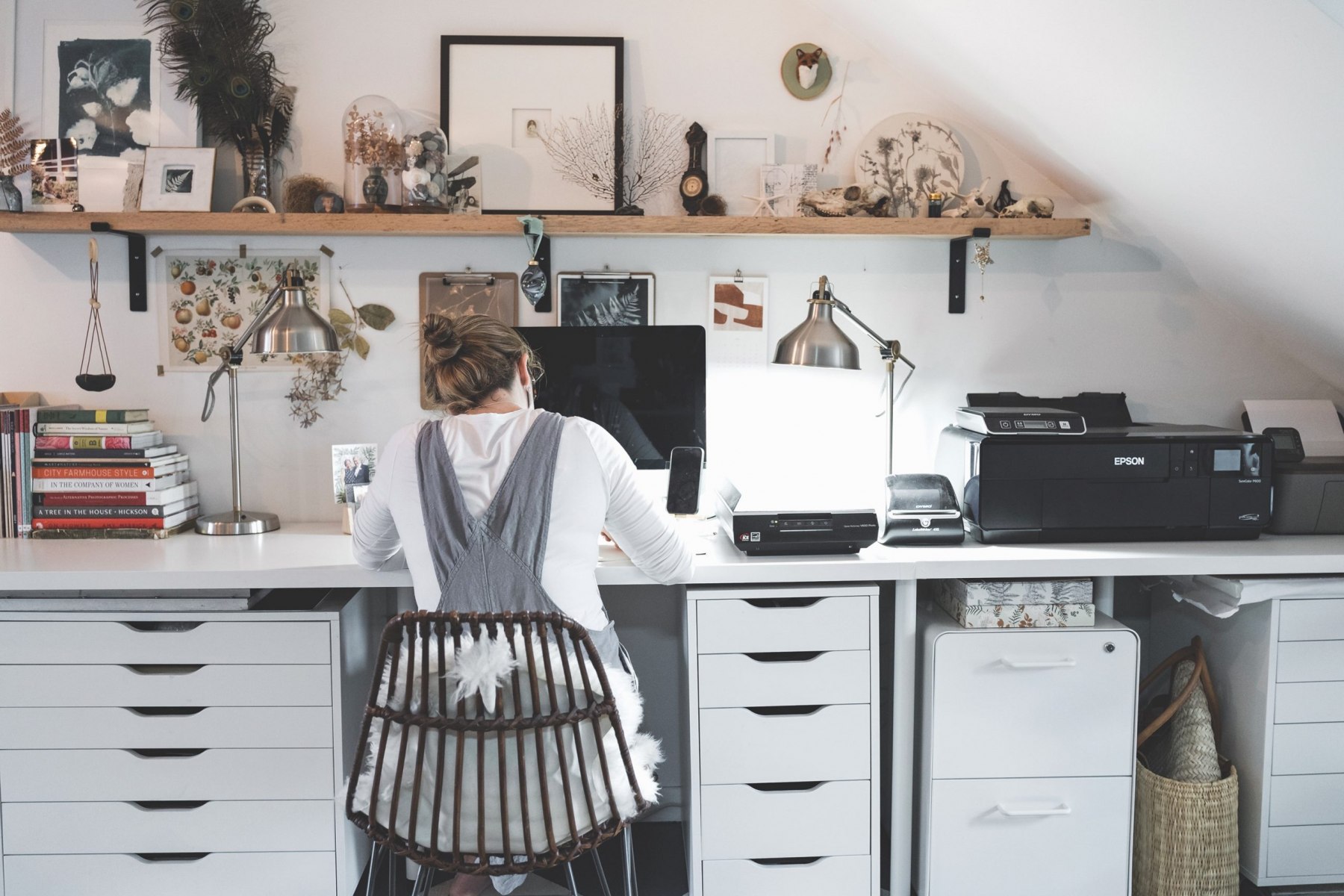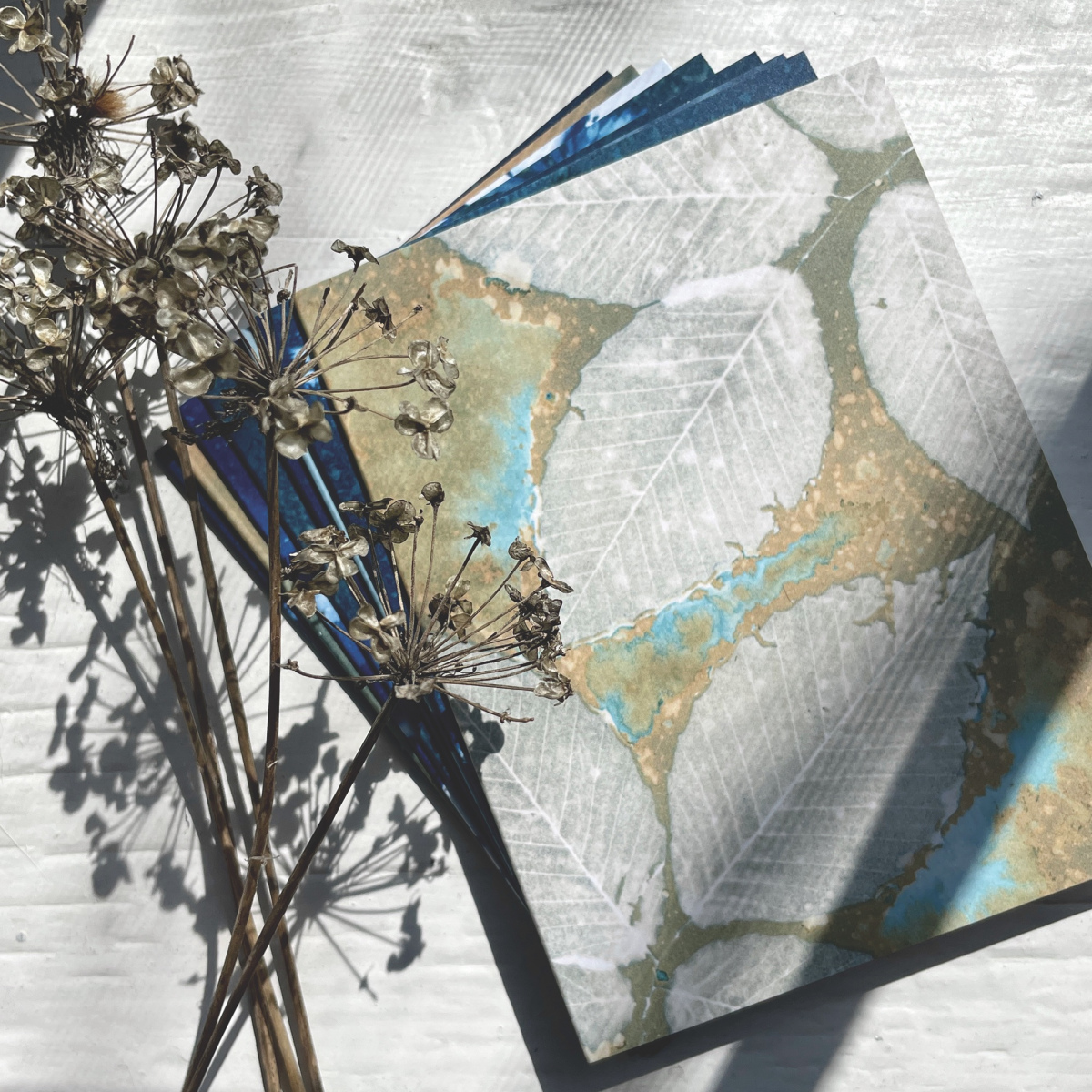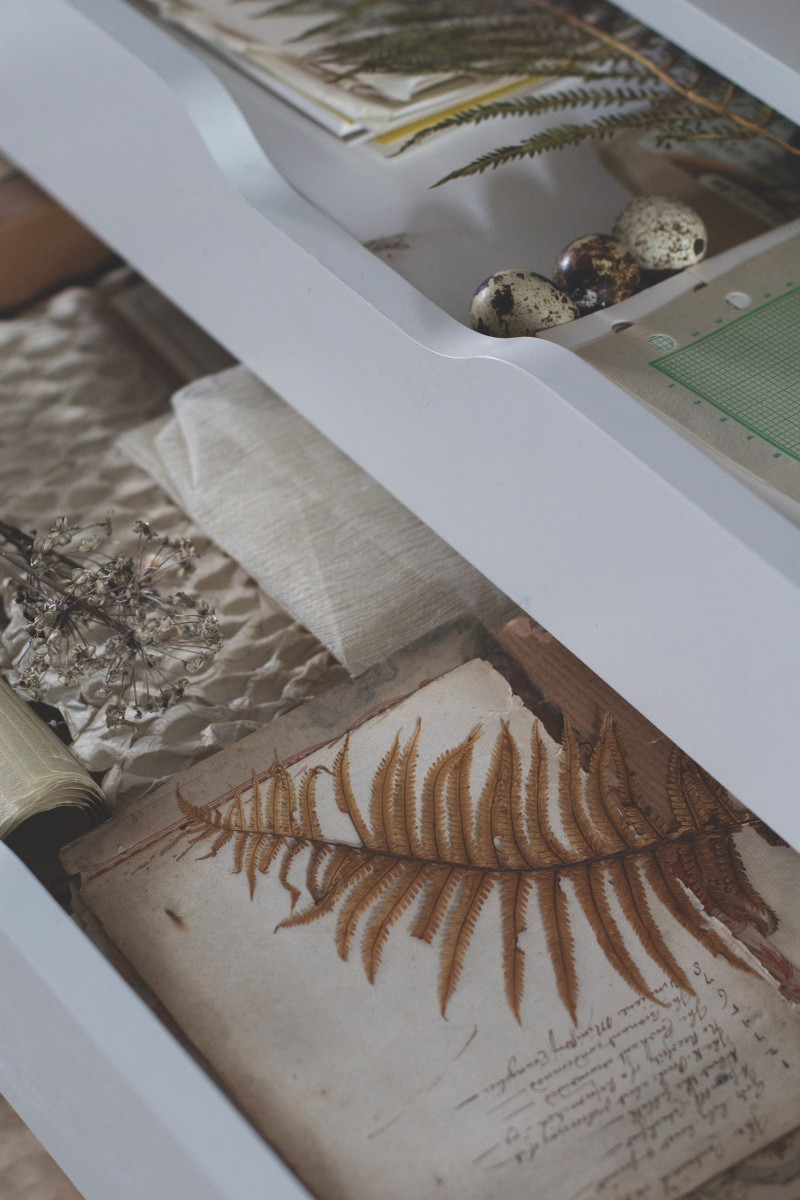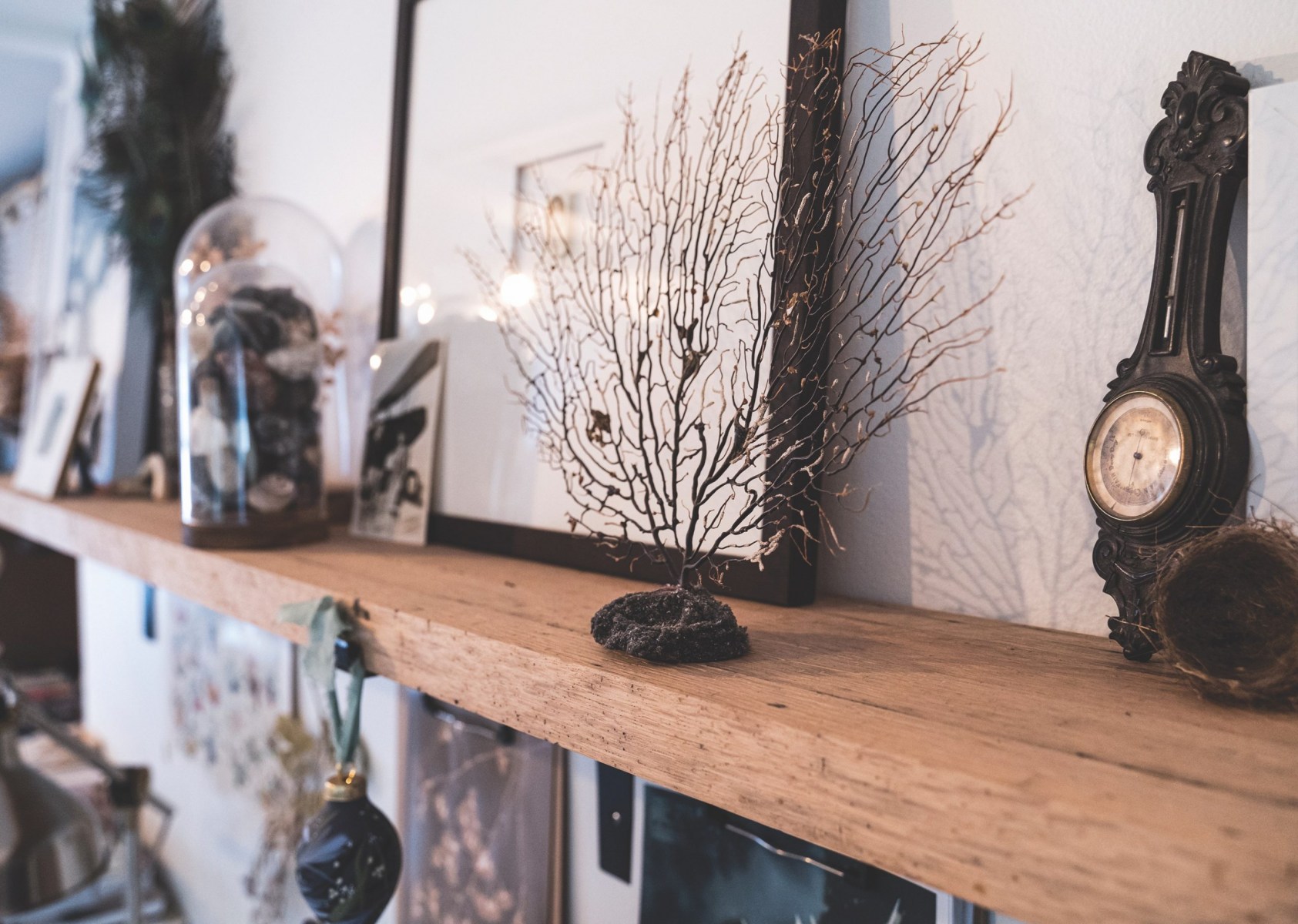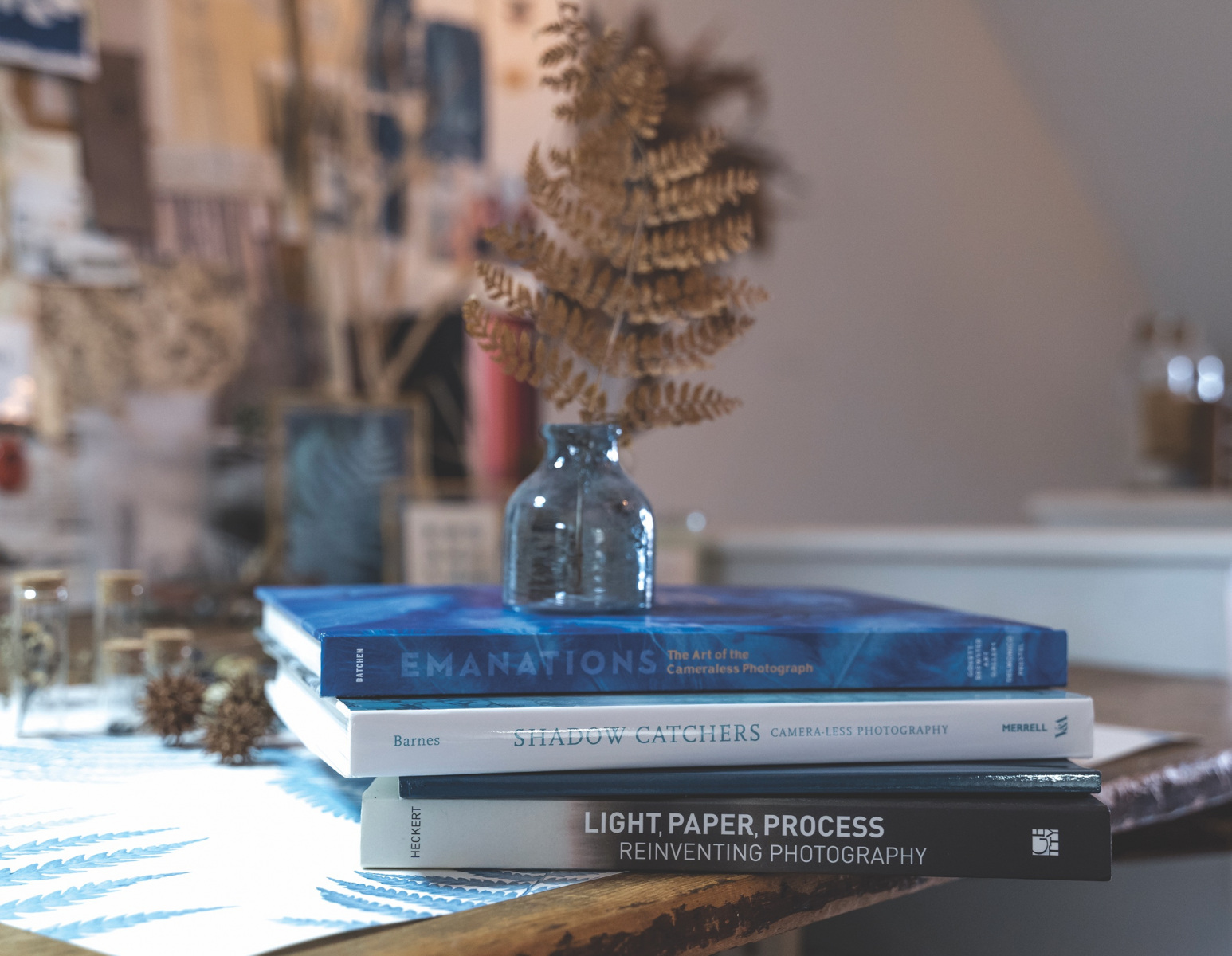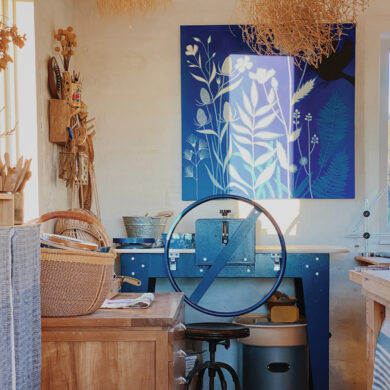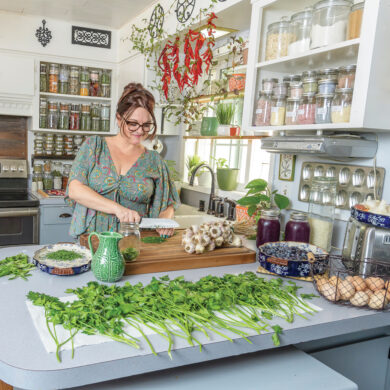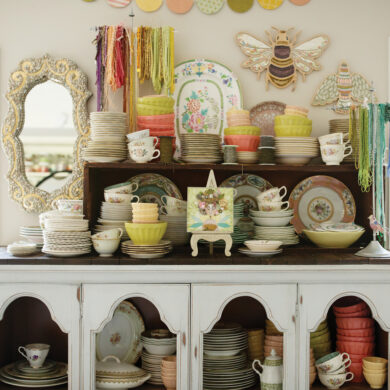I depend on the earth and all of its bounty for nearly every step of my creative process.
So when I think about my Where I often think of my studio as being simultaneously indoors and outdoors. My garden and sometimes the edge of a river act as studio space just as much as my third-floor studio, which is filled with foraged plants and other natural specimens that help me feel like I am still outside.
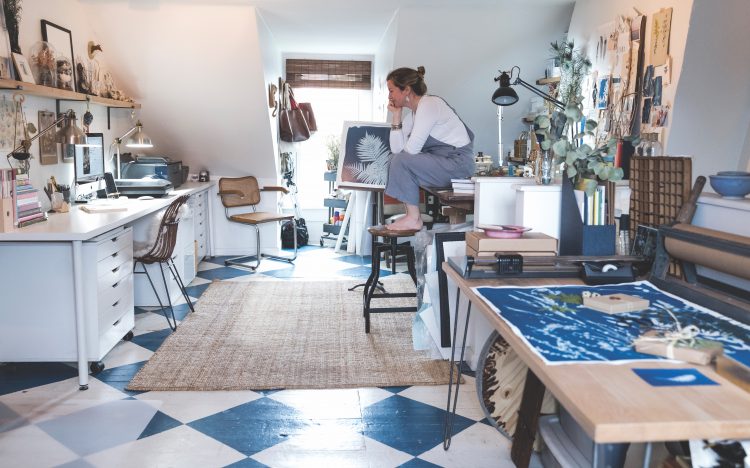
My earliest memory of being creative was sitting on the kitchen floor around age two after organizing a large shelf of toys, pots, and pans. My pride in that moment was not about having these things organized, but the aesthetic that resulted from intentional organization. I loved the way all the objects looked when stacked and put away. I remember my mom praising me and feeling very satisfied with my work. So began my life of carefully collecting and curating things that inspired me and helped foster a creative space within my mind.
My dad celebrated this tendency in me and encouraged my efforts in this direction as well.
My love of thoughtful curation extended to our gardens and other aspects of our home. You would often find me side-by-side with him in the garden, pulling weeds, planting bulbs, and thinking critically about where the newest-addition to the garden should be planted.
As we worked in the dirt, we’d talk about my Dad’s current work-projects. Because he was a restoration architect and frequently brought my brother and me along for explorations of old houses, reliving these memories through conversation in the garden became a playground for my mind. Unsurprisingly, preservation of the old became a frequent topic of conversation in my childhood. To this day, preservation of place has become a central theme in my creative process.
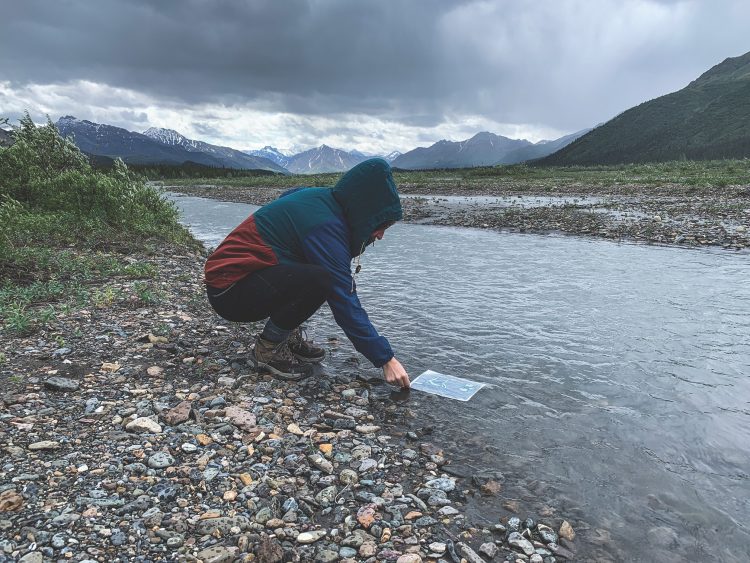
Recurring conversations around the preservation and appreciation of place and space began to shape my creative heart. Throughout my life, I’ve heard people say that a lack of space shouldn’t keep us from creating; that it shouldn’t define our work. But how can it not? Our inhabited spaces form so much of who we are and how we think. I can see with each stage and move in my life how the spaces from which I have created have informed my work and have begun to tell the story of what I am working through.
As a child, I’d escape to the woods to be secretly creative. I had a playhouse at the end of a carefully maintained trail, where all of my loves came together. Space and stones magically formed a home of several rooms that became the heart of my childhood and outdoor time. Back in my parents’ house, I was lucky enough to have what I called my “Little Room”, which was essentially a closet connected to my bedroom. It was a place where I could be alone and be creative. In that little room, I was a teacher to my stuffed animals, a dollhouse interior-designer, and fine artist; as I drew and painted and wrote in my journal.
I wanted to be in quiet, secret spots, which became fertile soil for my creativity. The creative process for me, even from a young age, was always something that needed its own headspace. Looking back as an adult, I can see now how I have created that kind of space in nearly every place I have lived: from a small, intimate desk in the corner of a dorm room, to a closet-turned-creative-space in my first apartment, to the studio I have shaped and curated on the third floor of our home.
The walls in my third-floor studio are formed by the pitch of the roof of our small townhome. I feel most full of possibility when I am there alone. The floors are blue and white—not a purposeful connection to my work; but I like the way they pay homage to the most-common tones of my cyanotypes. I have flat files full of collected objects, old papers, and found treasures. The shelves above my long, white desk are full of carefully collected objects from artist friends, and foraged finds that inspire me daily.
I want the objects I look at daily to remind me of my Why: why I choose to pursue my creativity daily, why I chose to start Atwater Designs, and why I feel led to delight my audience through my passion for creating. Each little piece of paper, animal skull, feather, and plant remind me of my Why. Specifically, they remind me of how nature has always been my window into contentment and peace. They remind me that nature draws me, sometimes without realizing it, into a space of wonder.
My studio extends to my tiny backyard-garden full of flowers and inspiration that connects me to that peace and wonder. I often use the plants and specimens that grow in my garden to create my work. I love how much each one of these spaces I call my studio draws me out of myself and inspires me.
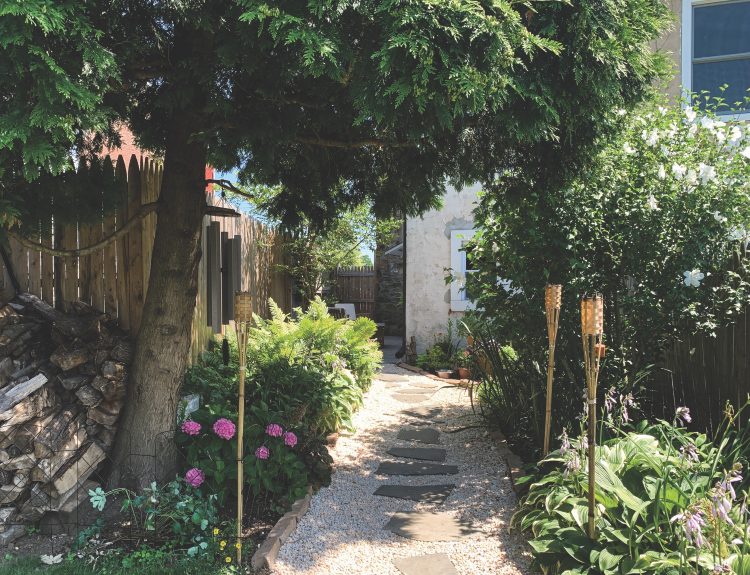
–
Even though I studied photography, book arts, and printmaking on the path to my MFA, it was only after a critique during graduate school that I realized how profoundly alternative process photography resonated in my heart. I noticed then that there was something about the mystery and unique results from alternative process photography (of which the cyanotype is one example) that for me, felt like coming home. I longed to immerse myself in every step of this creative process and bring the joy of that immersion to others.
It was in the experimentation, the mystery and marriage of printmaking and photography that cyanotypes made their home in my heart. I fell in love with the reality that in my process, there’s only so much one can control; and then the rest is left to fate. I marvel in that mystery. Recognizing this growing passion, I began envisioning a design studio with a series of products that use the cyanotype process to help bring the natural world into the everyday lives of my audience.
I started building Atwater Designs with an achievable goal in mind: turn my cyanotypes into greeting cards and small reproductions. What I’ve found in the years I’ve been building this business is that the possibilities truly are endless.
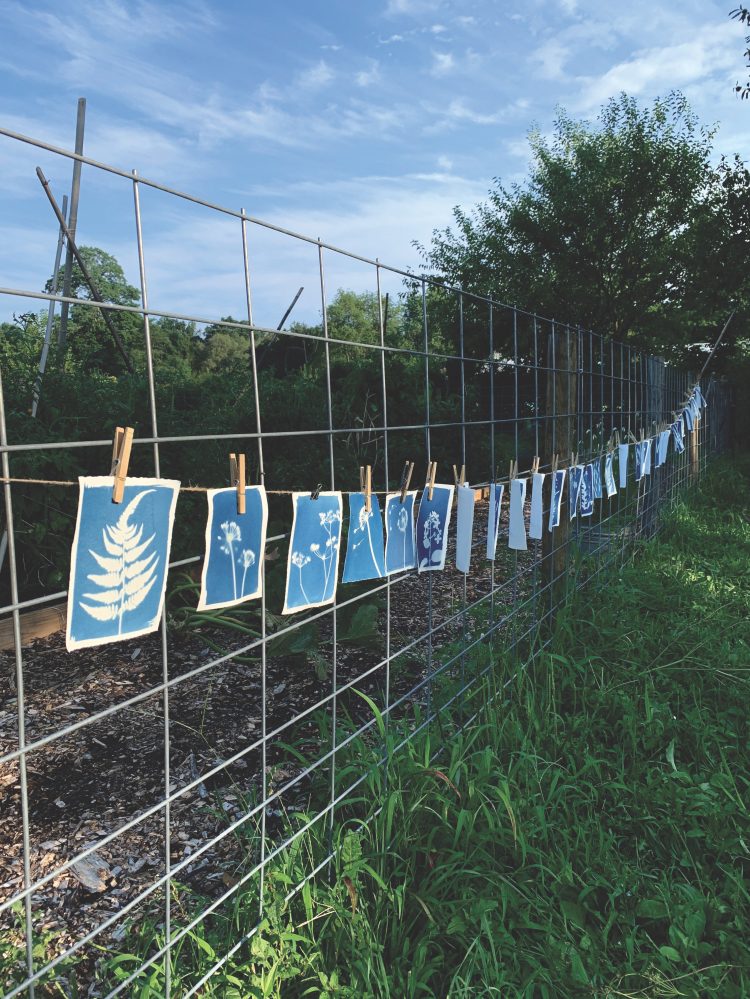
My audience, who I would describe as those for whom I show up every day, have been supportive of the growing directions my business has taken, from textiles to wallpaper, to wrapping paper, to face-to-face workshops and several online courses. I love that I get to see each of my thoughts and dreams come to life in this creative home I call my studio.
I am nearly always disappointed at how fast-paced our world has become. I’m saddened that we need apps and programs to remind us to slow down and look deeply at the world around us. My response to this frenetic pace of life is the part of my work and business that I find to be most meaningful: I want my work to encourage people to slow down with intention, to look at the flora and fauna all around us, to take time to know and discover the smells in our everyday lives, and to live mindfully in community with what and who is in front of us.
Although I don’t scare very easily, as a business owner, I live with the acknowledgement that businesses can and do fail. Being an artist and running a business are full of daily disappointments, but both being an artist and a business owner are, at their core, about problem-solving. Failure has always been my biggest teacher because with each loss or lost opportunity, I gained an incredible educational experience that taught me something even more important than what I set out to do at the beginning.
At some point I started to put a lot of faith in the moments that felt hard or scary. I took note that each led to something else; usually something I couldn’t have dreamed up on my own. So when I feel the hardships or tough times approach, I try to breathe through those fears and doubts, try to let go, and get outside. Because being in nature, whether traveling to far-away destinations or simply listening to the birdsongs in my tiny backyard, always makes me feel more connected and more true to myself.
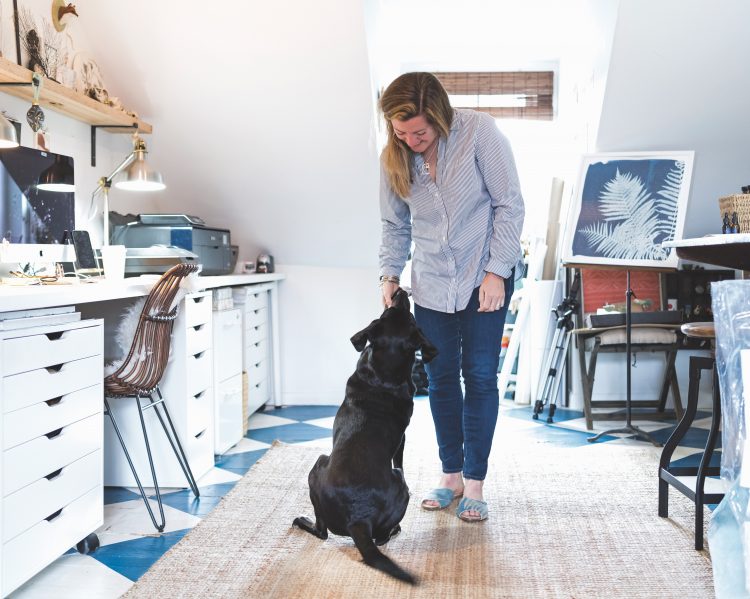
One of my core philosophies while building Atwater Designs has been to remain deeply connected to the natural world, no matter where my travels take me. Most recently during a trip to Alaska, I made time between hikes to create cyanotypes from some of the native Alaskan wildflowers. Although that collection was a crowd-favorite, the collection meant a lot to me personally because it was a good reminder that place and purpose inform one another in ways far beyond the power of words.
I hope that as I continue to travel the world, my audience continues to seek ways for their own outdoor experiences to be part of their interior. Some of my most exciting projects have been creating pieces for customers who invite me to walk with them in their garden or yard, and then work to transform the magic of that experience into an enduring work of art. I routinely find that capturing both the moment and the magic of place can make ordinary spaces become extraordinary. Quite simply, that transformation can turn the simple into the secret and sacred.
Whether as a child or in my adulthood, the idea of home has always held a special meaning in my heart. At its best, it can be both simple and sacred and becomes an endless well of creativity. I see that creativity unleashed in the best ways when I create one-of-a-kind collections and teach workshops in the places that others call home. By helping others fall more deeply in love with the space around them, I am able to share the wonder and joy that captures me every time I dare to create.

